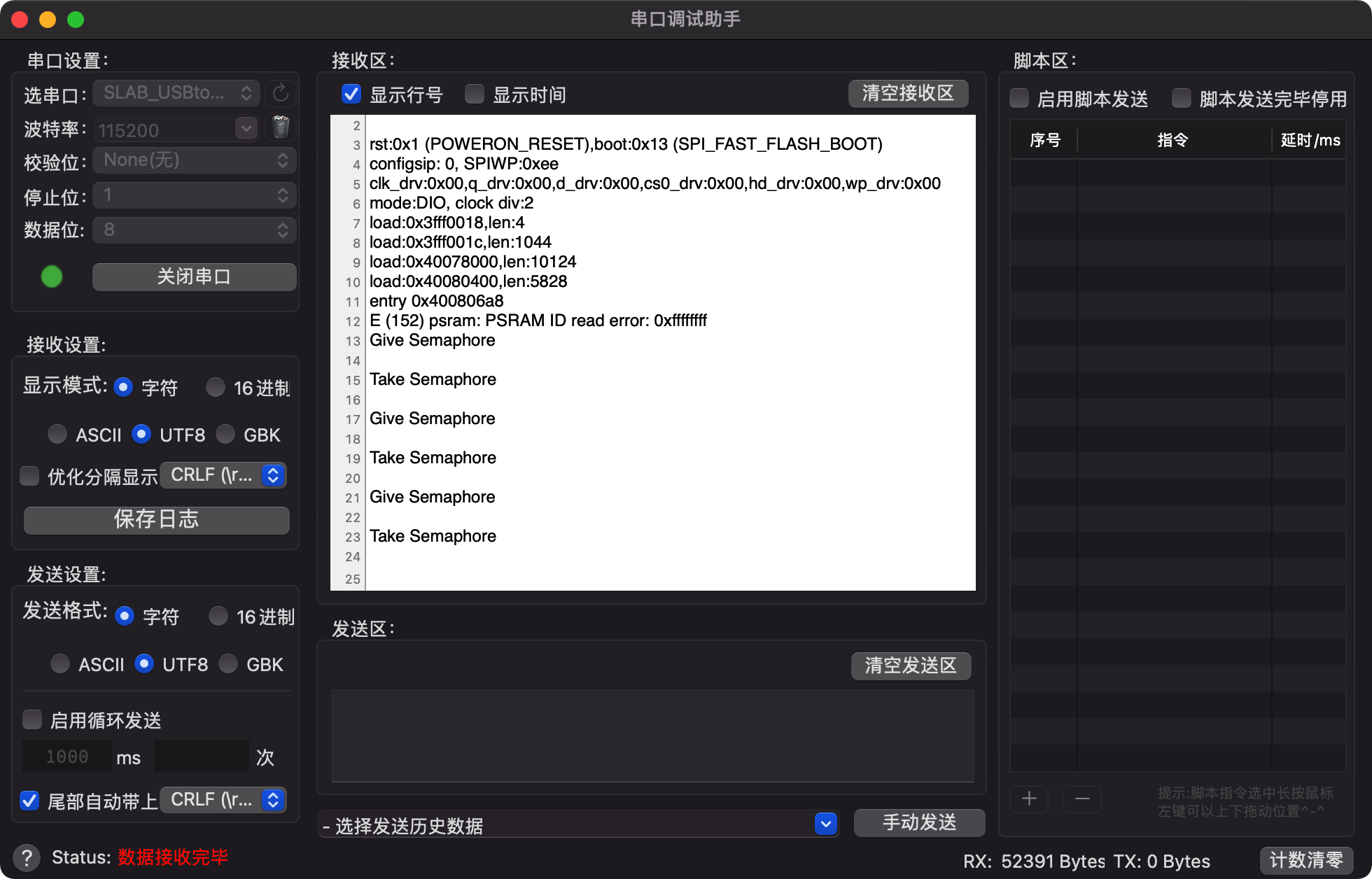本文基于ESP32-S开发 之 FreeRTOS Task
本文的主线 信号量 => 简介 => 同步
信号量
1
2
3
4
5
6
7
8
9
10
11
12
13
14
15
16
17
18
19
20
21
22
23
24
25
26
| #include <stdint.h>
#include <semaphore.h>
#include <stdio.h>
#include <stdlib.h>
#include <pthread.h>
#include <unistd.h>
sem_t sem;
void *testfunc(void *arg) {
while(1) {
sem_wait(&sem);
printf("hello world...\n");
}
}
int main() {
pthread_t ps;
sem_init(&sem, 0, 0);
pthread_create(&ps, NULL, testfunc, NULL);
while(1) {
sem_post(&sem);
sleep(5);
}
return 0;
}
|
1
2
3
4
5
6
7
| gcc sem_demo.c -o sem_demo -lpthread
./sem_demo
|
简介
Binary semaphores are used for both mutual exclusion and synchronisation purposes.
同步
1
2
3
4
5
6
7
8
9
10
11
12
13
14
15
16
17
18
19
20
21
22
23
24
25
26
27
28
29
30
31
32
| #include <Arduino.h>
SemaphoreHandle_t xBinarySemaphore;
void vTaskTake(void *pvParameters);
void vTaskGive(void *pvParameters);
void setup() {
xBinarySemaphore = xSemaphoreCreateBinary();
xTaskCreate(&vTaskTake, "Task Take", 1024, NULL, 1, NULL);
xTaskCreate(&vTaskGive, "Task Give", 1024, NULL, 1, NULL);
}
void loop() {
}
void vTaskTake(void *pvParameters) {
for (;;) {
xSemaphoreTake(xBinarySemaphore, portMAX_DELAY);
printf("Take Semaphore\r\n");
}
}
void vTaskGive(void *pvParameters) {
for (;;) {
vTaskDelay(5000);
printf("Give Semaphore\r\n");
xSemaphoreGive(xBinarySemaphore);
}
}
|

参考

